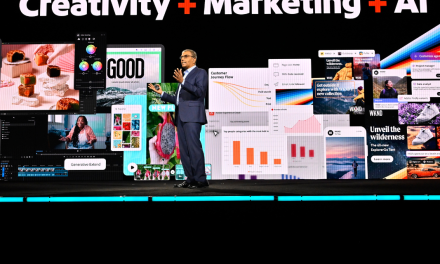This Chinese New Year is an occasion for marketers to set their brands alight. And, with 2024 hailing the Year of the Dragon, marketers have the perfect occasion to ignite strength, rapture and prosperity among consumers.
Yet far too many brands struggle to capitalize on this pivotal holiday period due to a history of poor online engagement.
For over a decade now, retail brands have leveraged a multitude of digital channels to capture and engage audiences and convert them into e-commerce sales. And this has paid off so far. By 2026, the Southeast Asian market is expected to reach around $230 billion in gross merchandise volume. Meanwhile, this year, Asia as a whole will capture a staggering 61.4 percent of the expected e-commerce revenue.

However, SEA’s e-commerce landscape is highly competitive. If brands remain complacent towards long-term customer experience, any campaign, no matter how sizzling, will go unnoticed by the majority of consumers.
Marketers and business leaders must continuously grasp the unique and changing needs of their target audiences, paying close attention to their best-selling products, emerging consumer trends and campaign effectiveness.
Here are the six key pitfalls that may be harming your success this Chinese New Year.
1) Not paying attention to churn
When customers leave your platform or uninstall your app at an unhealthy rate, it’s a clear sign that something is wrong. But, if addressed, the results can be a revelation: a mere 5% boost in customer retention can catapult profits by up to 75%.
Tapping into your data and mapping at which points your customers are dropping off during their journeys can reduce this churn. The insights gleaned from customer journey mapping can lead to sustained success, stronger loyalty and better profitability.
2) Ineffective segmentation
When a brand uses the same content with all customers, irrespective of preferences, engagement will be predictably low. Sometimes known as ‘spray and pray’, poorly segmented campaigns with the same uniform messaging are guaranteed to capture the wrong audience and demographics, turning many recipients off your brand.
The solution lies in implementing advanced segmentation and personalisation features in marketing campaigns. More precise targeting will yield higher engagement rates and improved return on investment. In fact, well-targeted campaigns can increase customer engagement by up to 74%.
3) Low app engagement
When an app has a high number of downloads but minimal ongoing activity, it’s a warning sign for poor brand engagement. This isn’t entirely abnormal: roughly 25 percent of users abandon an app after just one use. However, it needs addressing to sustain customer interest.
Marketers can deploy push notifications, in-app messages and personalized content to re-engage users. These tactics should result in increased daily active users (DAUs) and improved stickiness, effectively reducing app abandonment.
4) Inconsistent experience
Far too often, customer experiences across the web, mobile and other channels are inconsistent. This reduces brands’ ability to build trust and engagement. Marketers should aim to maintain coherent and omnichannel branding, messaging and user experience (UX).
Almost three-quarters of customers expect companies to deliver invariant experiences across all channels. Marketers who prioritize this will see heightened trust, increased customer engagement and a boost in conversions.
5) Poor campaign ROI
Marketers are always chasing the desired return on investment (ROI) from their online campaigns, but a huge portion of businesses are dissatisfied with their conversion rates.
Advances in artificial intelligence, however, can improve this. Leveraging AI across data analytics, A/B testing and customer behaviour will help refine campaigns to optimize them more effectively. Using data and AI this way can improve conversion rates and generate a higher ROI on marketing spend.
6) Very little to no personalisation
What unifies all the previous points is that online campaigns need personalisation. Generic experiences and boring content, plus a need for tailored solutions, leave customers feeling undervalued.
In contrast, consumers are highly more inclined to shop with brands that recommend relevant offers that fit their unique demographic and preferences.
Investing in AI and machine learning to analyse customer data and behaviour can help marketers craft highly targeted campaigns. Results of increased engagement and loyalty will soon be apparent, along with a reduction in shopping cart and app abandonment rates.
Paying attention to these pitfalls will ensure brands have the right groundwork in place to fire up their Year of the Dragon campaigns and ensure future success.

















